In this episode we continue our conversation from Episode 3 about VR use – this time discussing which shutter speeds work best and which ones to avoid.
From there, it’s off to the Q&A section where we tackle a common technique question with Back Button AF, decide if you should set your camera to sRGB or Adobe RGB, and finally talk about when to use a tripod vs a monopod.
TOC
00.01 – Intro and tip – stabilization / VR and shutter speeds
11.00 – BBAF – When to press, when to release
14.23 – sRGB or Adobe RGB?
17.59 – When to use a tripod vs monopod
The podcast is available below, on iTunes (search Backcountry Gallery), Google Podcasts (click here), and on Spotify (once they update their feed – search Backcountry Gallery). (Please note, Podcasts are an audio-only format)
Podcast: Play in new window | Download
Subscribe: RSS
.
Show Notes
M + Auto ISO Video – Click Here
RGB updates. John Shaw wrote and mentioned a couple additional (and very insightful) notes about using sRGB I wanted to pass along.
1. If the LCD on the camera has a color gamut at all, it’s probably sRGB as I doubt that Nikon or Canon or Sony are using color corrected LCDs.
2. But more important for me is that Nikon changes where an underscore falls in the file name depending on the color space selected. I want my file names to be easy to read. sRGB positions the underscore after the camera name, just before the four-digit file number while Adobe RGB puts an underscore before the camera name. Each of my cameras have a unique name, such as JSP (John Shaw Photography) or NIK or D5N etc. Pretty basic, but this lets me easily identify which camera was used. I rename files as I download via Lightroom, adding YYMMDD_ to the filename created by the camera. sRGB means a file might be named 191025_D5N_1234 while Adobe RGB would result in 191025_D5N1234. Perhaps it’s just me, but I find the first is easier to read.
—
As an added update, one of our commenters below reminded us that the embedded Jpeg will also use whatever picture profile you have selected too. I should have mentioned that one in the podcast, but it slipped my mind.
PS – If you enjoyed this post, I think you’ll REALLY like my e-books and video workshops! Thousands of pages and hours of videos filled with tips, tricks, and techniques – all my best content! Check ’em out – click here (hey, it’s free to look).

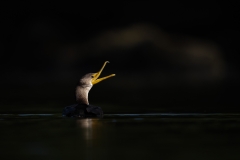
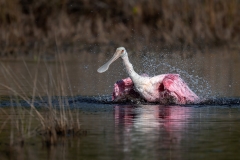
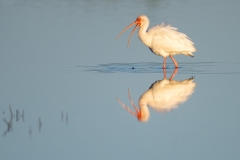
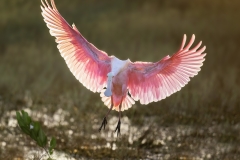
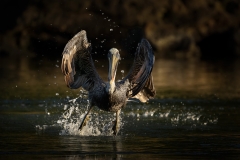
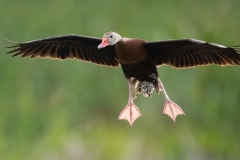

I don’t usually listen to podcasts, but this was a good one Steve! I found your discussion and pointers about Adobe vs RGB to be excellent. I do work for newspapers, mags and online, and have the F11 key on my MacBook Pro laptop, dedicated as a PS Action to automatically flatten and convert my colour profile from Adobe RGB to sRGB, before pressing F12 using another Action, to do a Save As to a particular pre-selected file – useful in batch processing. I always shoot Adobe RGB for maximum flexibility, especially if I need to convert to CMYK or… Read more »
Thanks you Steve as always great information. you are absolutely right about tripod, i have been practicing it has make a great difference. thanks again !!
Why use podcasts.. When you can make a YouTube video n make some money..
🙂
Great tips! One additional point I’d like to add regarding the hand holding of large lenses…or for that matter even medium sized ones given the weights of today’s camera bodies…is the risk of repetitive motion injuries. I shoot hand held with a D700 and a 70-300 mm tele and last year I developed a severe case of what’s normal called tennis elbow. My doctor told me that the weight of my camera gear combined with repetitive up and down motion caused the injury. It’s been more than a year of treatment and the severe pain is pretty much gone but… Read more »
Did you ever use just one leg of a tripod as a monopod? That eliminates the need to carry one more piece of equipment.
I have and didn’t really like it. Too awkward, at least with the tripods I use.
hey Steve great podcast
sorry this is unrelated to the podcast but which camera do you think has the better high iso performance out of the d4 and the d500
thanks in advance
That’s easy – the D4 🙂 However, that’s of course assuming you’re filling the frame equally on both cameras. A cropped D4 vs a non-cropped D500 gets things closer.
thanks man really appreciate it
Steve, Your discussion of VR…or no VR above 500 was very interesting and I’m trying that out. I guess my silly question is…If it’s better to not use VR above 1/500, and many/most action shots are usually taken at 1/1000 or higher (at least for flying birds, etc.), then why does Nikon even bother having a “sports” mode for VR on a Nikon lens if we’re better off not using VR??
Thanks,
Tom
Excellent podcast. When talking about the potential problems with VR at high shutter speeds, you mention “loss of acuity”. Is this the same as loss of sharpness? In other words, does acuity = sharpness?
That’s a god question – acuity is like sharpness yes, however, the difference is, in this context, that a lens may be properly focused on a subject – so it’s as “sharp” as it can be – however, the image still shows a loss of fine detail that it normally wouldn’t. VR problems often look like just a touch of motion blur where emotion blur should be impossible (although it’s not quite the same either – it’s hard to explain I guess).
Some day, I’d like to see some 1:1 images that illustrate the difference between lack of sharpness vs sharp but lacking fine detail. By the way, I enjoy the technical aspects of your podcasts and videos, and I am not bored no matter how minutely you describe technical issues. For example, I thought that your list of factors that can contribute to problems with VR was excellent and I would not have minded a further discussion of each one of them. And I love your sense of humor. You could do “photo standup”.
Thank you, Steve. I learn something from you every time. I am new to photography and have purchased two of your e-Books. I recently had the opportunity to use a RRS monopod with my Nikon D500 with battery grip + Nikon 200-500 mm lense. I have always kept VR on as that gets to be quite the weightlifting set when combined with my Leica 12 x 50 binoculars. I can definitely appreciate an improvement in my photographs on the recent trip to Colombia as compared with some of my earlier attempts. Each trip, I try to challenge myself to do… Read more »
Hi Steve, this is a very helpful podcast. I am about to leave for a safari in Masai Mara. I plan to rely mostly on myD500 with a 300PF and have a question about teleconverters. Would a 250-500 shutter speed range still be the sweet spot for VR when using the TC-14E III?
In my experience, it seems to be. However, I would also urge you to test things out if you have a chance. I have had two copies of the 300PF. The first copy was very poor at higher shutter speeds, but the second is much better. I think my second copy is still the best in the 1/250th ~ 1/500th range, but I’ve used it at faster speeds with mostly* good results with the D5 and D850 (*i.e., some of the shots were fine with the new lens, others showed a loss of acuity at the same speed). Additionally –… Read more »
Hi NIce podcast again:) I leave sport VR on all the tim eon my PF300(+1.4) & 500PF ,only use normal if slow shutter speeds . Can’t see any minus in keeping it on. Many of my shots are 1/2000 or faster as alot of BIF. Actually this was on you recc. from a few years ago. When you say VR from 125-500 on the 300PF, is that normal or sport mode. On my 150-500 VR did cause focus issues on high shutter speeds, but after I got it serviced & AF motor changed, it seems OK with VR left on… Read more »
I don’t think I ever recommended faster shutter speeds and VR with the 300PF – that was an issue with that lens right from the start. Nikon update the firmware and it was better (you had to send the lens in), but you gotta be careful with it. However, it could also be that the setup you use and the way you handle the lens helps too – as I said, there are a lot of variables! And, as I mentioned, the 500PF does seem good pretty much anywhere, although I have read posts where people say to keep it… Read more »
But isn’t sport safer to keep on,as less active than normal VR? as many times I’m at 1/500 sec for sitting birds, then have to be quick to change speed as it flies, & no time to move VR switch
Nikon indicates for more extreme motion, Normal is the way to go. However, I too usually have mine set to Sport – the image in the viewfinder moves less. This in turn means that the AF point is where we actually think it is in the viewfinder – sometimes on Normal you see it jump a bit. However, anecdotally, Normal does seem a touch more stable to me sometimes. The biggest problem is that there’s really no repeatable, constant way to test VR – our own motion has too many variables.
Yes agree, and sometimes I get stressed trying to get the shot I want, so most misses are my error I think 😉 if only birds would behave more 🙂 PS Love your work ,very inspiring
Re VR, there are of course multiple modes to complicate matters, and the third has changed in Nikon with labels that need unpacking to boot.
I used the D500 & 200-500 a lot and confess I couldn’t see consistent differences from modes.
With Sony some users report that shot 2 in a fast shutter burst will be soft with OSS on.
Maybe the logic is this: can the sensor and lens compensation moves happen fast enough to complete between shots? That might mean in less than a tenth or even a 20th of a second.
Good job, Steve.
That was the best explanation of how high ISO noise reduction works on the entire interweb!
LOL – it was? Thanks!
Hi Steve,
I know that shooting in raw is the way to go but instead I have been shooting in both raw and jpeg. I am not experienced in using post processing and I notice on initial import the jpegs actual look better to me. Could you comment on my observations. I use Luminary’s 4.0.
PS. Your books are great and I have them all.
It depends on what the import is doing. If it’s pulling the embedded Jpeg from the preview, they should look about the same. The ones from your camera are likely a bit higher quality though. If it’s creating a preview from the RAW file, then you’re seeing the rendering from the software instead of what the camera did. This can be good or bad, it really depends on which device (the camera or computer) did the better job of interpreting the RAW file.
Hi Steve,
Which camera profile do you use?
Usually just Standard – however – Neutral and Flat give you a closer approximation for RAW clipping, so there are times I use those. The problem is, they make the image on the back of the camera look, well, flat and even a bit soft. So, keep that in mind if you use them.
Thanks, Steve, but do you mean Adobe Standard or Camera Standard?
Oops – I think I misunderstood. I thought you were talking about the picture profiles in the camera. In Lightroom, I tend to use the Adobe Color profile, however, I also have been known to switch to Adobe Standard if I don’t like how Adobe Standard is rending a particular image. (I also sometimes switch to one of the “camera matching” profiles as well). However, they are just a starting point.
My fault. I’m a (relative) beginner and to be honest only really discovered the picture controls on my camera (now a D500) and the profiles in Lightroom quite recently. I need to educate myself as to how and when to use them. Don’t suppose you’d consider a podcast or a YouTube on the subject…? 🙂
No worries Dave – actually, you were accurate – I just had picture profiles in my head from the podcast.
I am actually working on a set of Lightroom courses. The first will be out soon and it will cover file management, importing, and the Library module. By summer I hope to have the second course out – the Develop module. They will cover all of this in a very detailed, easy to understand way.
That’s excellent news!
Great news RE a Lightroom course!!! I’ve been hoping you would do one for some time!
Yup, it’s been requested for a long time – and something I really wanted to do. I’m in the final stages now – the vids are shot and I’m in the finalization stages for the first course. Once that’s released, I’m off to the Develop module.
Hi Steve great podcast, as always! #1 Re the VR, As you are aware, Nikon lenses now have more VR settings than a space shuttle control panel 🙂 for example, my 70-200 2.8E has VR Off/Normal/Sport ( I believe there is also an active in some lenses) Ive had many different answers in a forum, Is SPORT for unstable platforms like a chopper/boat? and, If I’m shooting a high SS from a boat, like 1/2000sec will it still help set to sport? I travel to far north Queensland every year May/September and am finding access for shooting birds from my… Read more »
Hi Gary – Thanks for the kind words. Sport can be used for unstable platforms, but so can Normal with similar results. The one that’s really designed for unstable platforms is Active. Usually, if the lens doesn’t have an “Active” VR setting, it means the system can detect / works fine using the other VR methods on an unstable platform. However, at 1/2000th, I doubt you need it at all – I’d shut it off at that point, especially on a 70-200 – that’s a pretty easy to handle lens 😀 (BTW – the major benefit with Sport is that… Read more »
Do you have a sweet spot (s) for the Nikon 500 mm PF?
Do your sweet spots on the Nikon 300 mm PF apply to the Nikon 80-400 mm at the 300-400 mm range
Not as much, I seem to have good luck with the 500PF at most speeds – although I suppose around the 1/500th of a second mark has been a crowed pleaser for me. The 80-400 is better overall with VR than the 300PF in my experience – it’s not as finicky.
Do you have a sweet spot(s) on using the Nikon 500 mm PF lens? Do your sweet spots on the 300 mm PF apply to the Nikon 80-400 mm at the 300-400 mm range?
Awesome episode Steve.
Very Interesting. Question – when using BB focus on Continuous (nikon) do you set focus to “focus” Focus and release” or Release Please please settle this for me.
Release 🙂 The “focus” options can slow the camera down a bit in some circumstances and the truth is, I have quite a few images where the camera didn’t have a lock and it turned out the image was perfectly sharp. So, I’ve used it on “release” forever and no regrets.
I’m confused by the way you answered. First you said “focus” and then said you had used it on “release” forever. Is it focus or release?
LOL, it looks like I’m confused in general, I corrected it. Too many 14 hour days in a row I guess. 😀
Steve,
I have the sony A7Rii, what about the three? AF, Release, or Balanced Emphasis ?
I’m way too new to Sony to say. I think I have it on Balanced at the moment, but I’ve put less than 1000 images though all the Sony cameras I have so I’m just a newbie here.
I run several tours a year during the winter in Yellowstone. Always appreciate the info, both here, eBooks and YouTube, that you pass along and gladly share your contact info often.
I’ll be heading back to Yellowstone for 10 days in a week and will rent a Nikkor 180-400mm before I possibly purchase one. I won’t have time to fine tune this on my D850 or D500. I’ve seen your comment before about “try before your buy” and wondered if you bother fine tuning in a situation like this?
Thanks much for your time!
I’d take a quick look at it if possible if I were you. I’d take it out and just see if you can find some subjects and see if there is any sign of consistent front / back focusing. There’s like a 90% + chance it’s just fine, but I’d want to test it a little before I start using it to be sure. The other thing is you could try to field-adjust it if you see a consistent problem. I’ve done that in that past for sure. However, like I say, there’s a good chance it’s just fine.
Thanks much for taking the time to reply! Happy shooting and sharp pics always!
On my Nikon D5500 in BBAF I have found that I am set to “Image Review on” , which rarely use, focus is disabled while the image is displayed
I’ve run into that same issue. My image review is off 🙂
Helpful podcast Steve, thanks. With regards to the question about setting color space in camera. Some may not realize that even if shooting strictly RAW any selected camera picture profiles/film simulation etc are applied to the camera’s LCD screen used when chimping images because the camera LCD display image is a camera generated JPG.
Great point 🙂 I should have mentioned it.
Hi Steve,
I have the same setup as does Neil T – D500 and Tamron 150-600mm G2. I had been going by your general guidance on pp. 156-159 of your ebook Secrets to Stunning Wildlife Photography to not lose sleep over VR on or off, so mine is always on. I haven’t been having problems with acuity, but now might do some testing just to be sure. Thanks! And keep up the good work!
It’s worth the test. The chances are you’re just fine. As I mentioned, every lens and camera combo is different – just too many variables. Most of the time it’s not a bog deal, but I do think it’s a really good idea to test and see.
Hi Steve, Just to give folks who might be reading this an update. I had an opportunity to test my configuration (above) photographing birds in flight at a nearby wildlife refuge this week. I turned VR off, and after a close examination of my photos on my computer, could not see any difference in acuity with VR on or off. I sure saw a difference in my viewfinder while tracking birds with VR off! So I am returning with confidence to keeping VR always on. Thanks for encouraging me to test. I agree it’s the only way to know for… Read more »
Thanks for letting me know. I don’t own the Tamron and I rely on reports form other users when people ask. This is very good to know. Thanks!!
My 200-500 has VR on all the time, unless on a tripod, but, I will now turn it off at 500th and beyond just to see if mine acts like yours does Steve?
Like I say, I don’t use the lens a lot, so I’m open to the idea it was just a fluke – or perhaps it was just the combination of camera / lens I was using. Tough to say. For sure though, give it a try and see if the non-VR shots are better at faster shutter speeds.
I will let you know how I get on Steve, will shoot some with VR and some without under exacting conditions.
Stay well and regards as always from England.
Hi Steve ,I can hear your voice but I cannot see your video?
It’s a podcast, so it’s audio-only.
Informative as always Steve. Here is a potential topic for you to address: On the Nikon D500, D850 (and maybe others I’m not familiar with) there is a Custom Control Assignment allowing one to assign various functions to various buttons on the camera. I have experimented with different settings over the last few years and finally settled on these custom control settings (again on the D500 and D850): Pv: AEL Hold Pv + Command dial: OFF Fn1: Spot metering Fn1 + Command dial: OFF Fn2: My Menu Af-On: AF-ON Sub-selector: Focus point selection Sub-selector center: AF-area mode + AF-ON (with… Read more »
Good job, Steve. Keep up the wonderful work.
Heh Steve love the podcasts. The VR tip “when you don’t need it is inspired” cheers. David, Scotland but in the Canaries now.
Thanks!
You mentioned SONY. Are you a convert?
Not yet – I have both systems (well, still building the Sony system). Both have their strengths and weaknesses. Check back in a year and we’ll see if I turn into a convert 🙂
Do you comments about when to turn on or off Lens VR apply to Nikon Z IBIS?
Honestly, I really don’t know. I have pretty much been using the guidelines in the podcast with my Z cameras and adapted lenses, but I have’t shot them nearly as much as my DSLRs. So, I can’t say for sure – it seems like it applies, but I need more time to test and see.
Thank you Steve, your podcast are always interesting and usefull.
With my Sigma 24-105, I have to turn off VR during long time exposure ( more than 1 second), but I think it always recommended with such type of long exposures (landscape photography) using tripod, indipendently from the peculiar lens.
Ps: Would it be possibile to set the listening speed at a rate between 0.5X and 1X to help those people who are not English mather tongue to better understand ?
Thanks for the comments. The player above is from my podcasts hosting company and sadly I can’t put an in-between speed in it. You can download the podcast though – maybe another player would allow a slower but still useable speed (the .5x speed seems way too slow).
Really enjoying these Steve! Keep them coming brother!!
Excellent podcast! Thank you!
I do all my shooting handheld in natural light with my Nikon D500 and Tamron 150-600mm; never occurred to me to turn off the VR. I’ll try it for higher shutter speeds.
BTW, you probably want to update your copyright at the bottom of your website page (and in your cameras) to 2020; you’re still at 2019. (but everybody forgets this because it only happens once a year)
LOL, I actually did a video on updating your copyright for the camera, but forgot my website! Thanks for the reminder 😀
Thanks Steve… Great session with tips from real time experience… Keep shooting and keep doing this podcast Steve…:)
Will do 🙂 Thanks!
Thanks Steve for all the helpful info! Appreciate the table of contents too.
Thanks for the kind words – glad you liked it 🙂